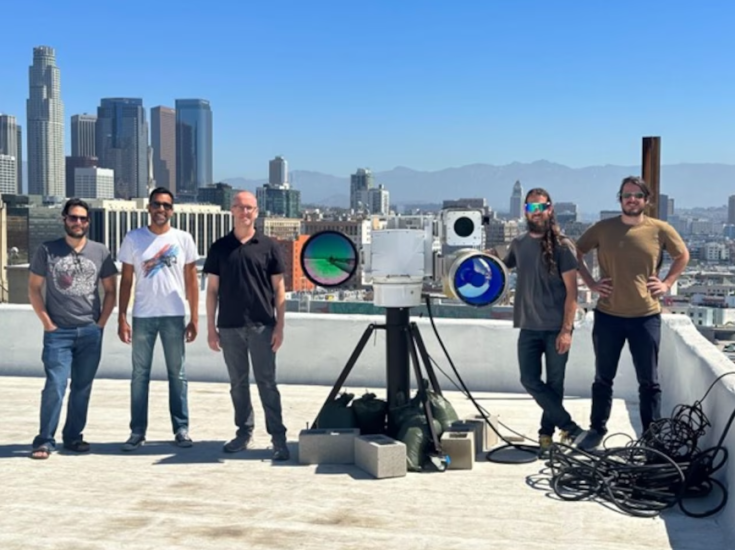An artificial intelligence-powered airspace monitoring system is set to be installed to enhance protection of the nation’s capital with the potential to scale across other Defense Department and U.S. government installations and systems, says the US Department of Defense (DoD).
The upgraded visual recognition, identification and warning system delivers a tenfold increase in performance capability compared to the 9/11-era system it replaces, said Air Force Lt. Col. Kurtis Engelson, the materiel leader for Battle Control Systems, which oversees the National Capital Region-Integrated Air Defense System program that partnered with the Defense Innovation Unit to utilize its commercial solutions opening solicitation process to rapidly prototype a solution and create a path for the Air Force to procure successful prototypes.
“It’s a cutting-edge surveillance, identification and tracking system that monitors and defends the controlled airspace around Washington, D.C., part of the National Capital Region-Integrated Air Defense System,” Engelson said.
After an 18-month prototype demonstration concluded in April, it was announced that Teleidoscope, a first-time, non-traditional Defense Department vendor, was awarded a $100 million ceiling production contract. Orders for the system are already in progress and fielding is to begin this year, Engelson said.
Initial prototype and procurement funding was provided by the U.S. Air Force, and additional procurement funding was provided by the Accelerate the Procurement and Fielding of Innovative Technologies program as part of its mission to accelerate the procurement and fielding of innovative technologies and help successful prototypes cross the proverbial “valley of death” for prototypes and move technology into production faster.
The new system leverages “market advancements in machine learning and augmented reality features in surveillance cameras that assist air battle managers with their ability to identify flying objects within NCR airspace”, Engelson said.
The production effort focuses on upgrading the cameras and eye-safe lasers used for tracking and visually warning aircraft in violation of the special flight rules within the region. The updates significantly improve air defense operators’ ability to positively identify aircraft and aim warning lasers at much further ranges, Engelson said. Laser Visual Warning System provides those involved with securing the air space over the national capital region, a rapid means of contacting pilots when radio attempts have failed.
The auto-tracking capabilities of the system are applicable to full-motion video feeds, irrespective of the domain, opening the door to augment remotely piloted aircraft video feed tracking capabilities. The software from this prototype has the potential to run on any edge device or cloud-provided, full-motion video feed. The technology has broad national defense applicability across the services for defense against asymmetric and near-peer threats like unmanned aerial systems and cruise missiles, Nick Ksiazek, the DIU program manager for the effort said.
Heidi Shyu, undersecretary of defense for research and engineering, said success and speed in fielding this technology in such a condensed timeframe exemplifies the improvements her office is driving. “We are able to rapidly identify operational needs and materialize them into usable national defense solutions. This saves time and money, but more importantly, the decision advantage gained by technologies like this will save lives,” she said.
The Washington, D.C., area is home to over 6 million people, key military bases, intelligence agencies, and federal, state and local governments.
The skies over the metro area are filled with commercial and military air traffic and an increasing number of privately owned drones.
Protecting this metro area from air threats by terrorists and adversaries is the National Capital Region-Integrated Air Defense System, a component of the North American Aerospace Defense Command.
Should an aerial threat materialize, an integrated air defense system is activated by DOD.
(Image: A team from Teleidoscope demonstrates upgraded electro-optical/infrared cameras with enhanced capabilities to improve airspace awareness in California. The company was awarded a contract for an artificial intelligence-powered detection system to monitor the airspace around Washington, D.C.)
For more information visit:
www.defense.gov




